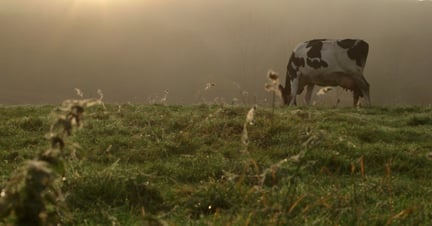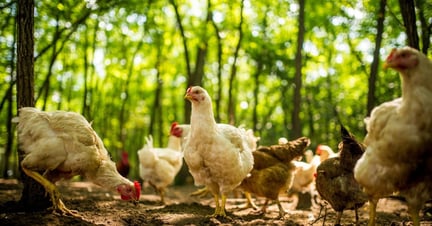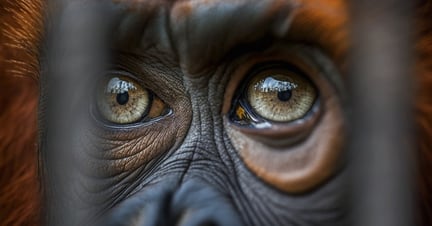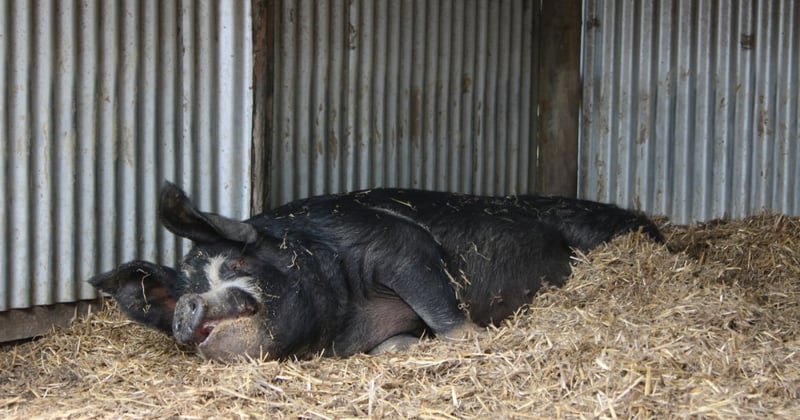
What is animal welfare?
Blog
What is animal welfare and why is it important?
What is animal welfare?
Animal welfare is a complex and multi-faceted subject with many definitions. One commonly cited definition from the World Organisation for Animal Health (OIE) states:
Animal welfare refers to the physical and psychological wellbeing of an animal. The welfare of an animal can be described as good or high if the individual is fit, healthy, free to express natural behaviour, free from suffering and in a positive state of wellbeing.
The concept of animal welfare includes three elements: the animal's normal biological functioning (which means ensuring that the animal is healthy and well-nourished), their emotional state (including the absence of negative emotions, such as pain, stress, and chronic fear), and their ability to express certain normal behaviours.
High welfare means animals have agency and control over their own lives, including the ability to express their full range of natural behaviours, feel safe, have positive experiences, and have a good quality of life.
This applies to all animals – from cows, pigs, elephants, and dogs, to chickens, fish, parrots, and snakes!
World Animal Protection believes animal welfare, good and bad, is affected by the actions and relationships human beings have with animals and their environments. It is our duty to ensure all animals are treated humanely, responsibly, and with respect.
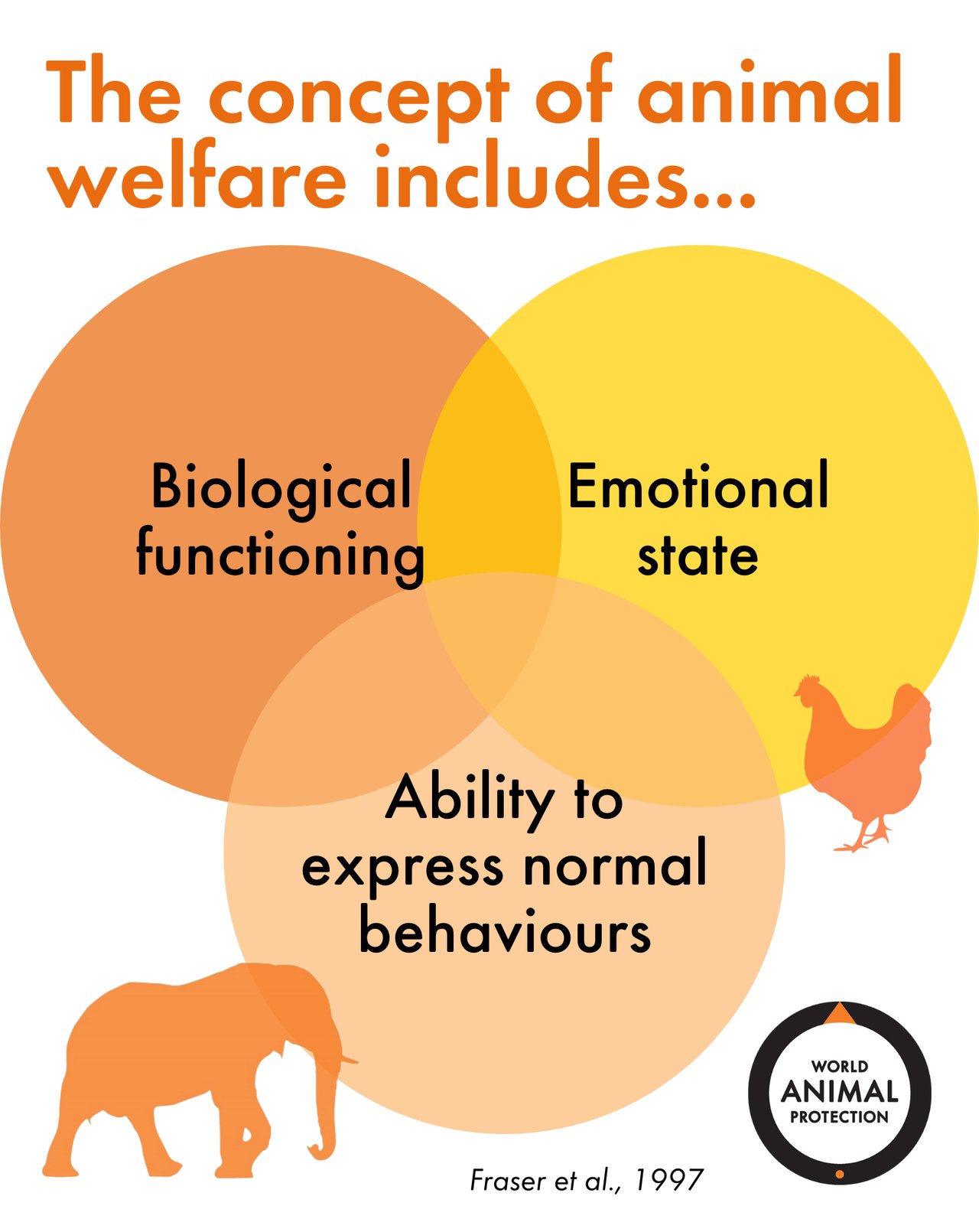
Animal welfare is a science. There is a large body of published research that addresses a wide range of topics from methods for assessing animal welfare, to evaluating and improving animal care (such as housing, husbandry, transport, and slaughter) to safeguarding the welfare of the impacted animal. Scientific research, among many other things, has helped to inform and influence legislation to better protect captive wildlife, and in developing standards of care for farmed and other animals under humans’ care.
Determining how to evaluate animal welfare has been essential to this field of science and has led to the development of several methodologies, including frameworks such as the “Five Domains Model”.
What is the Five Domains Model of animal welfare?
The Five Domains Model is a science-based framework developed by David Mellor as a more inclusive approach to animal welfare compared to the previous concept of the Five Freedoms. While this framework covers similar key elements, the Five Domains Model explores the mental state of an animal in more detail by looking at animals’ positive experiences and the factors that contribute to those experiences instead of only focusing on preventing negative experiences.
The Five Domains Model can be applied for an assessment of quality of life of an individual animal, and provide insightful information about husbandry practices that should contribute to a good quality of life for the animal and includes:
- Nutrition: animals have opportunities to access unrestricted, sufficient, species-specific, balanced, varied, and clean food and water.
- Environment: the animal’s environment provides comfort through temperature, substrate, space, air, odor, noise, and predictability.
- Health: animals are in good health, and illnesses and injuries are prevented, or immediately and appropriately treated.
- Behaviour: animals are able to express a full range of natural behaviours such as exploration, foraging, bonding, playing, retreating, and others.
- Mental State: by presenting positive situations and/or solutions in the previous four domains, the mental state of the animal should benefit from predominantly positive states, such as pleasure, comfort, or vitality while reducing or eliminating negative states such as fear, frustration, hunger, pain, or boredom.
Putting this model into practice, let’s take a look at an egg-laying hen in a free-range outdoor environment versus one kept in a small battery cage indoors:
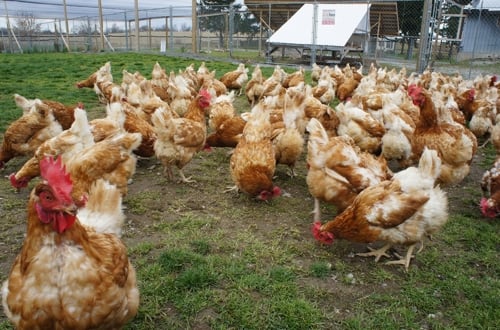
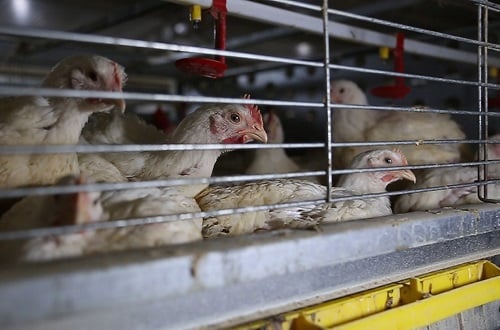
Why is animal welfare important?
Animals are sentient beings and they have the right to live free from pain and suffering.
Billions of people rely on animals for their livelihoods, food security, and for companionship. But that does not mean that animals have to be cruelly exploited. We can co-exist with animals by using the best animal welfare practices and by doing this ensure that animals live a good life.
Right now, animals are exploited at an industrial and global scale for things like food, fashion, exotic pets, and entertainment. Habitats are being destroyed, people are being exploited to carry out this terrible work, and animals are being kept captive in degrading and cruel conditions.
Every animal deserves to have a good life, and animal welfare standards help to improve the lives of all animals.
At the heart of all our work, and the solutions we propose, is the most recent science. We recognize that animals are sentient and experience emotions such as joy, pleasure, pain and fear. We believe that every animal deserves a life where the overall balance of their experiences are positive, and where they can express their full range of natural behaviours, such as freely interacting with others of their own species.
How we treat animals also impacts humans and the planet. We all play an important role in keeping the planet healthy and we all feel the impact when that interconnection is ignored. Animals inherently deserve our respect but it’s also in our best interest to protect them and prioritize their welfare.
Animal welfare is also important as it’s inextricably linked with human health and welfare. Urgent issues like the climate emergency, the biodiversity crisis, public health risks (including anti-microbial resistance and pandemic risks), and inequality and social injustice have increased public awareness of our interconnectedness with animals.
Promoting animal welfare is critical to making important changes and can help further other environmental and social justice issues.
Continue learning:
Five Domains Model vs. Five Freedoms of animal welfare
Blog
How can we assess an animal’s welfare? With tools like the Five Freedoms and Five Domains Model we can start to evaluate an animal’s wellbeing.
Animal rights vs. animal welfare
Blog
The terms “animal rights” and “animal welfare” are often used interchangeably, however, they represent different concepts.
What is animal sentience?
Blog
Animal sentience refers to the capacity of animals to have subjective experiences, thoughts, feelings, and individual personalities.
